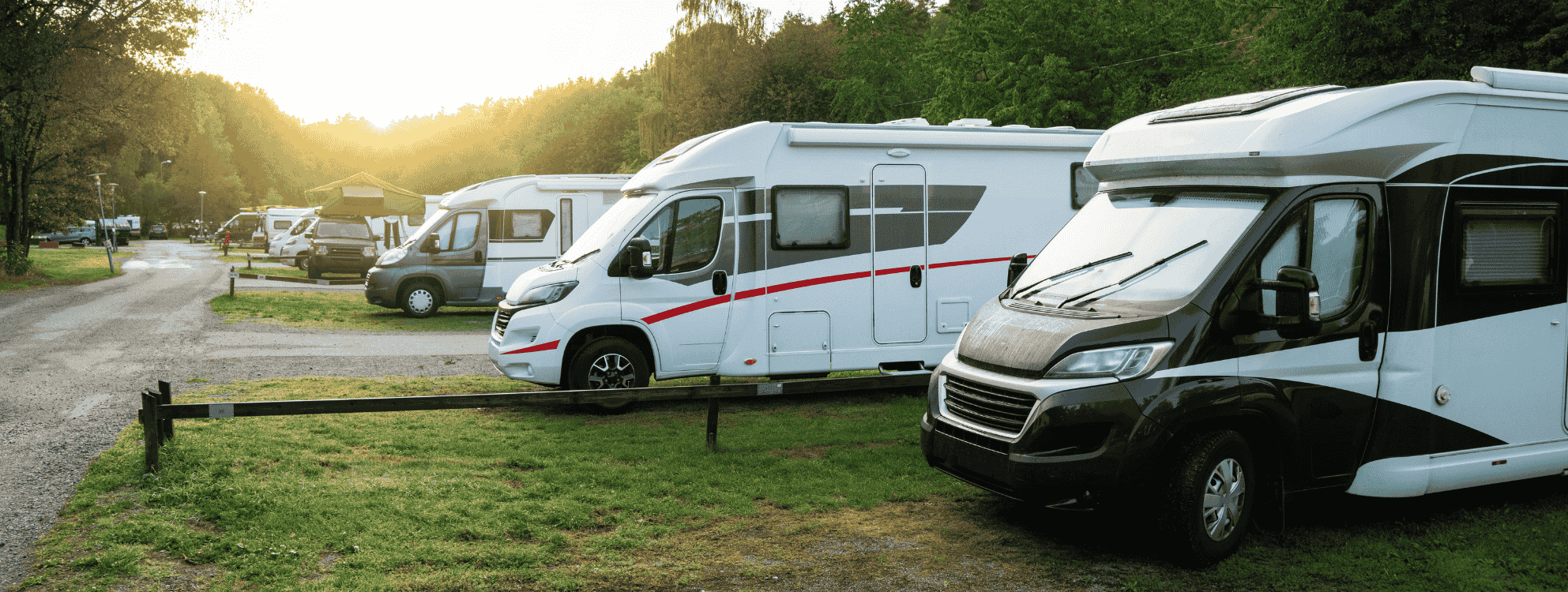If you're active on online motorhome forums, you may have come across debates about air suspension for motorhomes.
Motorhome air suspension can be a real game-changer, helping to make your time on the road feel less like a roller coaster ride.
Learning about air suspension systems can be helpful for both experienced travellers, and those new to motorhome life. So, what you're about to read could help to improve your experience on the road.
In this guide, we'll share what we think you need to know about air suspension for motorhomes including:
- The concept of motorhome air suspension
- The benefits of air suspension for motorhomes
- Types of air suspension kits for motorhomes
- The installation process
- Cost considerations
- Maintenance and care
So, if you're keen to learn more, carry on reading as we go into the ins and outs of air suspension.
The concept of motorhome air suspension
Standard motorhome suspension setups often struggle to absorb road shocks effectively, especially when road surfaces are uneven. Other factors like tyre pressure, vehicle weight, load distribution, and wind resistance can also make the ride less than smooth.

Standard setups are typically:
Coil suspension
Coil suspension systems use coil springs to absorb shocks from the road. The springs compress and expand as the vehicle moves over bumps, providing a basic level of shock absorption. However, it lacks the flexibility of air suspension systems.
Leaf spring suspension
Leaf spring suspension consists of multiple layers of metal (leaves) stacked together. These springs flex as the vehicle moves, providing support and absorbing shocks. This kind of suspension is renowned for its robustness and ability to handle heavy loads, ideal for larger motorhomes. While it offers robustness, it may not provide the most comfortable ride on uneven or rough roads
To make our drive experience better, automotive engineers created air suspension. This system uses air-filled bags instead of traditional coil or leaf spring suspensions. These systems use compressed air to adjust the ride height and stiffness, providing a smoother and more controlled ride.
This system is different from regular suspension systems. It allows changes in real-time based on road conditions and load weight. This is especially helpful for motorhomes that carry different loads.
The benefits of air suspension for motorhomes
Air suspension can offer several advantages that can transform your travel experience:
- Improved comfort - it helps to absorb road shocks more effectively, resulting in a smoother travels. This is especially beneficial on uneven or bumpy roads.
- Better Handling and stability - it improves handling and stability by adjusting to road conditions. This reduces body roll during turns and enhances safety.
- Smoother journeys - Air suspension systems can adjust ride height. This assists you in ascending or descending steep slopes, enhancing your journey's comfort
Types of motorhomes air suspension kits
Many suspension systems are available on the market, to improve the ride quality and handling of motorhomes. Each type offers distinct features tailored to different motorhome models and user preferences.
If you are thinking about investing in an air suspension system, there are different kits available. These kits offer various levels of functionality.
Basic air bag kits: Designed for smaller motorhomes, these offer ride height adjustment and improved comfort. Investing in this system is a smart way to improve the driving experience. It does this without the complexity of full systems.
Full air suspension systems: Suitable for larger motorhomes, they provide control over ride height, stiffness, and load distribution. This system allows you to enhance your drive by allowing adjustments based on road conditions and load.
Automatic levelling kits: Advanced systems that automatically adjust the suspension in response to road conditions and load changes. Many people say that these offer great comfort and stability. They ensure a smooth ride no matter the conditions.

Installing motorhome air suspension
Installing an air suspension system can be a straightforward process, but it how you do it requires careful consideration.
For those with mechanical skills, DIY installation can be a cost-effective option. However, it requires the right tools and knowledge of the motorhome's current suspension system.
On the other hand, hiring a professional can help ensure that someone installs the system correctly and safely. This also reduces the chance of future problems arising later down the line.
Cost considerations
When doing your research into motorhome air suspension systems, it's important to take the following associated expenses into account.
- Initial purchase cost - it can cost a few hundred to several thousand pounds. The price depends on the features and complexity of the kit.
- Installation expenses - Professional installation can add to the cost but can help to ensure proper setup and functionality.
- Maintenance costs - Regular maintenance is important for good performance. However, these costs are usually lower than those of traditional systems. This is because there are fewer mechanical parts to maintain.
Maintenance and care
To keep your motorhome air suspension system in good working order, follow these maintenance tips to enhance longevity:
- Regular inspections - Check for leaks or damage in the air bags and connections.
- System calibration - Calibrate the system regularly to get the most accurate ride height and stiffness adjustments.
- Troubleshooting common issues - Address any unusual noises or performance issues promptly to prevent further damage.
Things to do before you buy
Before you invest in an air suspension system for your motorhome, we suggest that you follow these steps. This list will help you make a smart choice.
Assess your needs -Figure out what you want from the system. This could be better ride comfort, improved load distribution, or more stability.
Research your options - Look into different types of kits. These include basic air bag kits, full air suspension systems, and automatic levelling kits. Look for features that match your needs, such as adjustability, ease of use, and automatic levelling capabilities. Get advice from professionals or motorhome owners who know about air suspension systems. They can offer helpful insights and recommendations. If possible, test drive a motorhome with a similar system to experience the benefits firsthand.
Check it's compatible - Check if the system is compatible with your motorhome model and its existing setup.
Set a budget - Create a budget for your investment. Compare the costs of different systems, including installation and maintenance.
Check the warranty and aftersales support - Make sure the system has a warranty and good customer support for future issues or maintenance.
Plan the installation - Decide whether you will install the system yourself or hire a professional for installation. Consider the complexity and tools required.
Motorhome insurance to keep you on the move
No matter which type of air suspension system you choose for your motorhome, ensuring its safety on and off the road is essential. Getting specialist motorhome insurance can help cover unexpected costs from damage, theft, or breakdowns. At Lifesure , we can offer a range of coverage solutions tailored to fit your needs and budget, including RAC motorhome breakdown insurance. To explore your insurance options, contact Lifesure at 01480 402 460 or get a quote online.
Disclaimer: The sole purpose of this article is to provide guidance on the issues covered. This article is not intended to give legal advice, and, accordingly, it should not be relied upon. It should not be regarded as a comprehensive statement of the law and/or market practice in this area. We make no claims as to the completeness or accuracy of the information contained herein or in the links which were live at the date of publication. You should not act upon (or should refrain from acting upon) information in this publication without first seeking specific legal and/or specialist advice. Arthur J. Gallagher Insurance Brokers Limited trading as Lifesure accepts no liability for any inaccuracy, omission or mistake in this publication, nor will we be responsible for any loss which may be suffered as a result of any person relying on the information contained herein.
FP1047-2025











